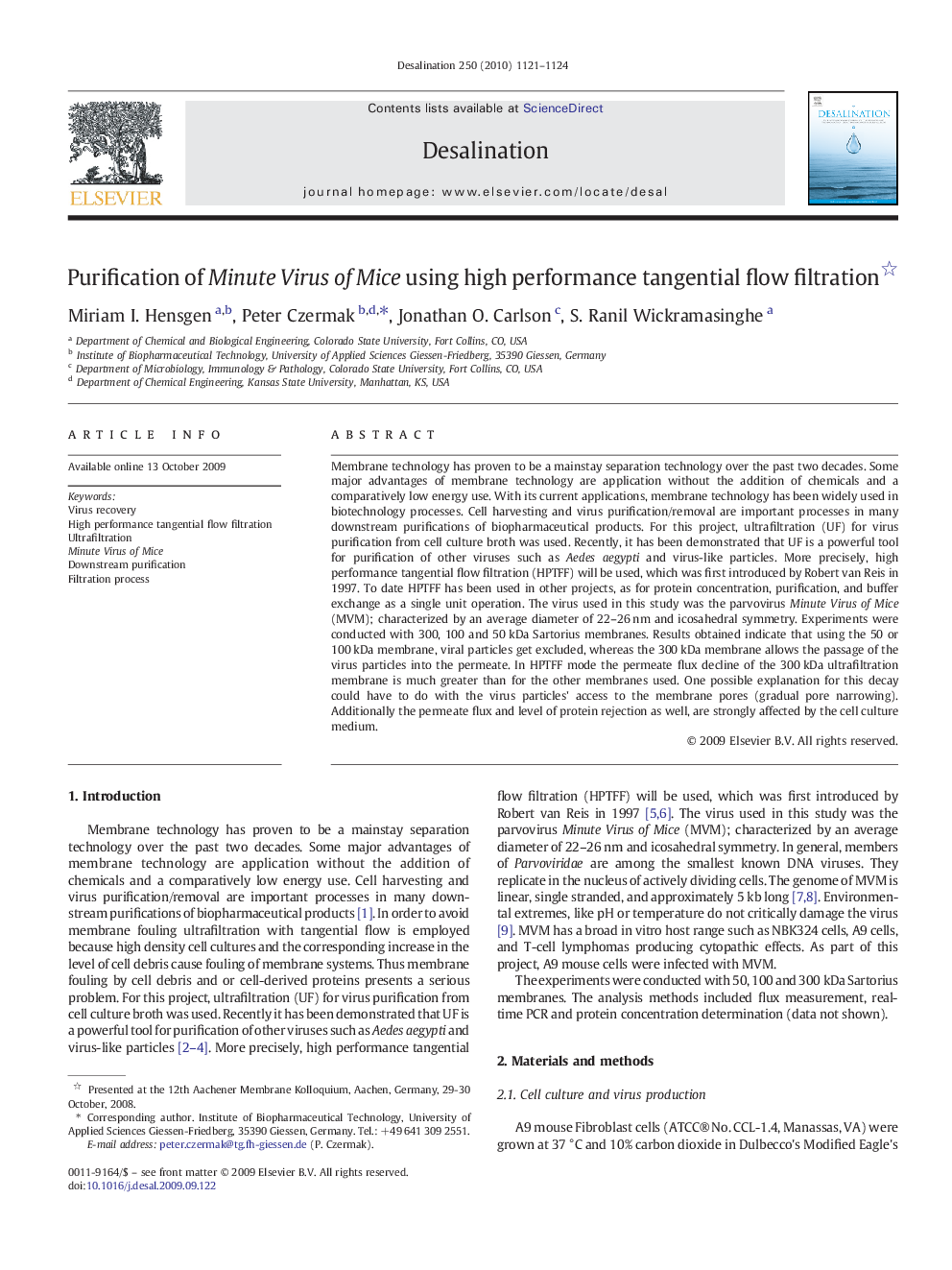| Article ID | Journal | Published Year | Pages | File Type |
|---|---|---|---|---|
| 626022 | Desalination | 2010 | 4 Pages |
Membrane technology has proven to be a mainstay separation technology over the past two decades. Some major advantages of membrane technology are application without the addition of chemicals and a comparatively low energy use. With its current applications, membrane technology has been widely used in biotechnology processes. Cell harvesting and virus purification/removal are important processes in many downstream purifications of biopharmaceutical products. For this project, ultrafiltration (UF) for virus purification from cell culture broth was used. Recently, it has been demonstrated that UF is a powerful tool for purification of other viruses such as Aedes aegypti and virus-like particles. More precisely, high performance tangential flow filtration (HPTFF) will be used, which was first introduced by Robert van Reis in 1997. To date HPTFF has been used in other projects, as for protein concentration, purification, and buffer exchange as a single unit operation. The virus used in this study was the parvovirus Minute Virus of Mice (MVM); characterized by an average diameter of 22–26 nm and icosahedral symmetry. Experiments were conducted with 300, 100 and 50 kDa Sartorius membranes. Results obtained indicate that using the 50 or 100 kDa membrane, viral particles get excluded, whereas the 300 kDa membrane allows the passage of the virus particles into the permeate. In HPTFF mode the permeate flux decline of the 300 kDa ultrafiltration membrane is much greater than for the other membranes used. One possible explanation for this decay could have to do with the virus particles' access to the membrane pores (gradual pore narrowing). Additionally the permeate flux and level of protein rejection as well, are strongly affected by the cell culture medium.
